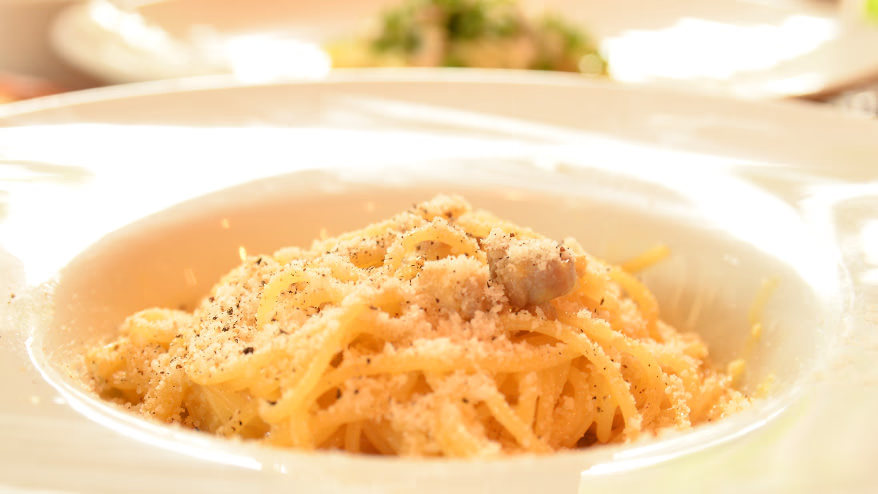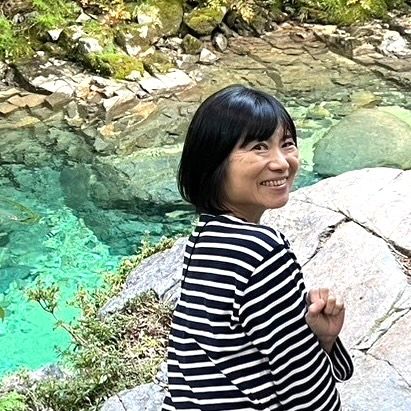さて、どこで昼ご飯を食べようかな?私は何を食べるか決めずにとりあえず席を立ってしまう。そのせいか、会社を出て20分経っているのにまだウロウロしているということがよくある。おかげで常人なら決して行かないであろう遠くの店を知っているのだが。
今日も何も決めないまま、てくてく歩きはじめてしまった。通りに出たところで思いついたのが、ラリベラだ。モノサスからは歩いて8分、代々木駅からなら3分。大通りから一歩はいった静かな通りにイタリアンの店、ラリベラはある。この辺りは住宅地なので商店も少ないが、駅からは近いのである。
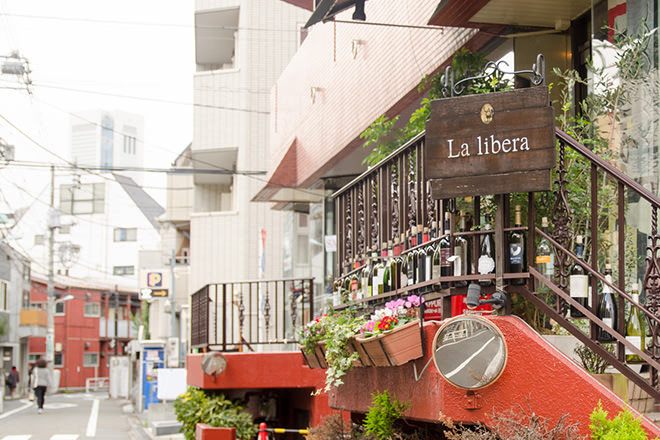
レンガ色のマンションが目印。ワインのボトルが並んだ階段を上がる。
季節が変わるごとに食べたい旬の野菜。
私がこのお店を好きな理由のほとんどは、野菜にあるかもしれない。使われている野菜が珍しい種類であったり、もちろん味も美味しい。初めて食べにきたときは夏で、とうろもこしのポタージュは感激ものだった。
野菜の正体は「鎌倉野菜」。ここ数年TVや雑誌で取り上げられるようになるずっと前から、ラリベラでは鎌倉野菜を使っているのだ。一番手軽なAコースでもその鎌倉野菜をちゃんと味わうことができる。
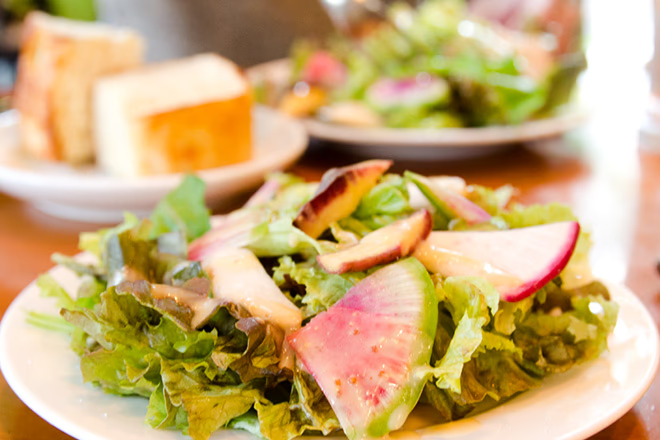
ふだん見慣れない根菜がいろいろのっている。鎌倉野菜サラダ。
最初に出てくるサラダはリーフレタスにいろんな色のニンジン、紅芯大根、カブなど、根菜類の薄切りが入ったシンプルなもの。土の香りといっしょに本来の野菜の匂いとか味が濃くて、初めて食べたときはこれもびっくりした。(ニンジンの匂いが嫌いだ・・・という人には興味ないかもしれないけど。)私はニンジンが大好きなのでうれしくてバリバリ食べてしまう。
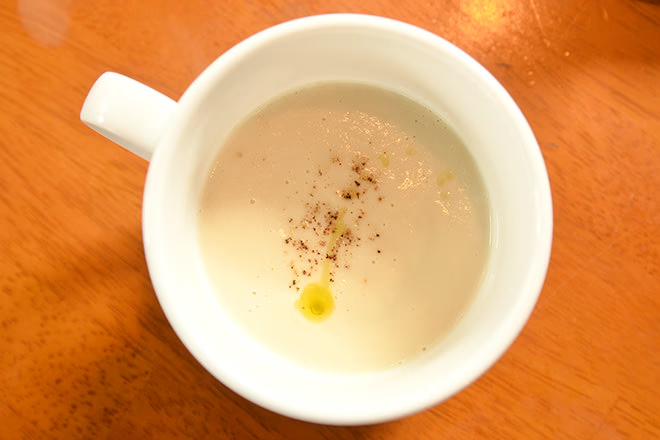
おかわりしたくなるポタージュ。使われる野菜はその季節のもの。
次にスープ。今日はカブの白いポタージュである。その前の週に来た時はニンジンのポタージュだったので、これもその時々の仕入れで変わるのだろう。とろりとクリーミーで胃に良さそう。いつも、もうちょっとほしいなーと名残おしい気分で食べ終える。(何気なく”食べ終える”、と書いてしまったけど、ほんとに食べる感じのスープなのである。)
“レンバイ”で仕入れてくる鎌倉野菜。
そしてメインのパスタが出てくる。その日の仕入れで決まるパスタの種類は3種類。鎌倉在住のシェフ自ら毎朝、鎌倉の“レンバイ”(※)で野菜を、佐島漁港で上がったばかりの魚を仕入れてくるのだという。そうして仕入れた食材をトレジャーバックでかつぎ、はるばる電車で通っているのだそうだ。
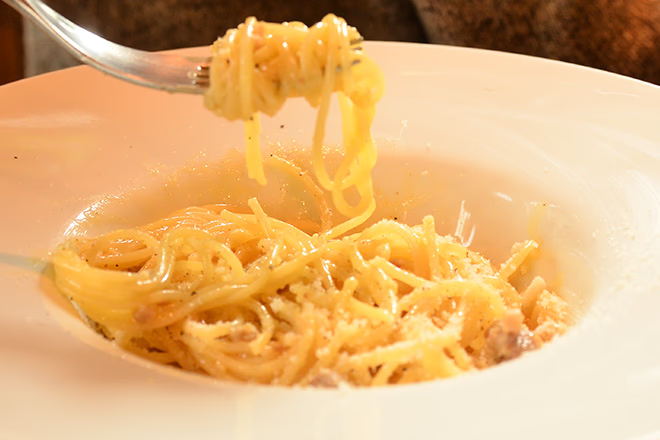
カルボナーラの卵は三浦半島の養鶏場から。
今日は「自家製パンチェッタと”アトムくん”卵のカルボナーラ」に決めた。”アトムくん”卵とは、三浦半島にある養鶏場農場の卵だそうで、卵の味が濃い。パンチェッタの塩辛さがよいアクセントになって永遠に食べ続けられそうだ。フォークをぐるぐるする手が止まらない。きれいに完食し、コーヒーをたのんでぼーっと一息ついた。
もうこのまま帰りたいなぁ・・・なんていけない気分にもなってくる。が、そろそろ会社に戻らねばなるまい。ともあれ本日も無事、美味しい昼ご飯をいただくことができた。
ランチコースの紹介
ABCの3コースから選べるようになっている。
Aコース(今回ご紹介しているコース)が基本のコースで鎌倉野菜のサラダ、鎌倉野菜のスープ、自家製パン、本日のパスタ(3種類から選ぶ)で900円。コーヒー別オーダーして1050円となる。BコースはAコースに前菜の盛り合わせとコーヒーがついて1600円。Cコースはさらにメインディッシュ、ドルチェ、コーヒーで3250円となっている。この日は2組のお客様がCコースをたのんでいるらしく、赤、白のグラスワインとともにゆっくり楽しんでいた。Aコースで時間いっぱいの私にはうらやましい光景だった。
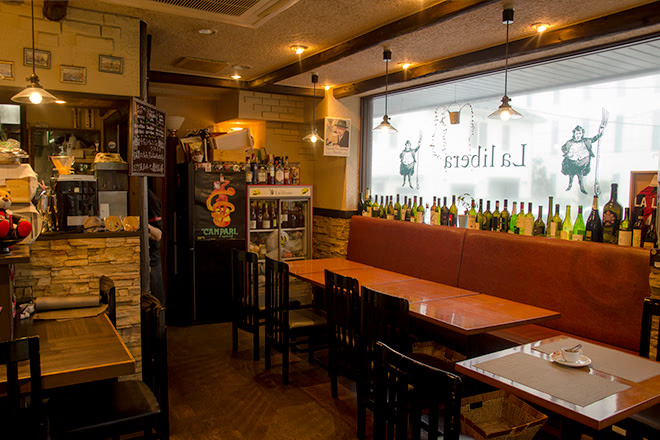
ラ リベラ (La libera)
tel 03-3375-6422
東京都渋谷区代々木1-23-7 第三瑞穂ビル 1F
http://www.lalibera-km.com
営業時間
月~金:Lunch.11:30~14:30 / Dinner.18:00~24:00(L.O.22:00)
土:Lunch.12:00~15:00 / Dinner.18:00~24:00(L.O.21:30)
